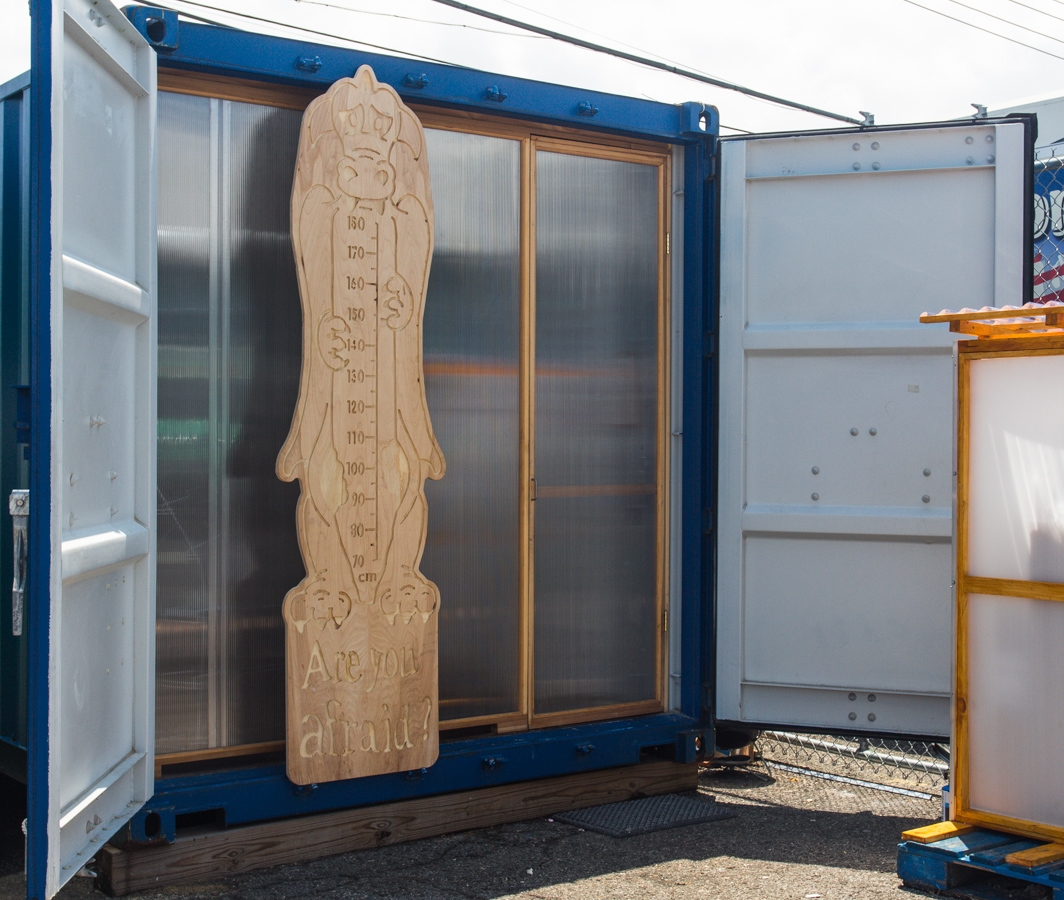
Curated by Gabrielle Jensen and Elizaveta Shneyderman
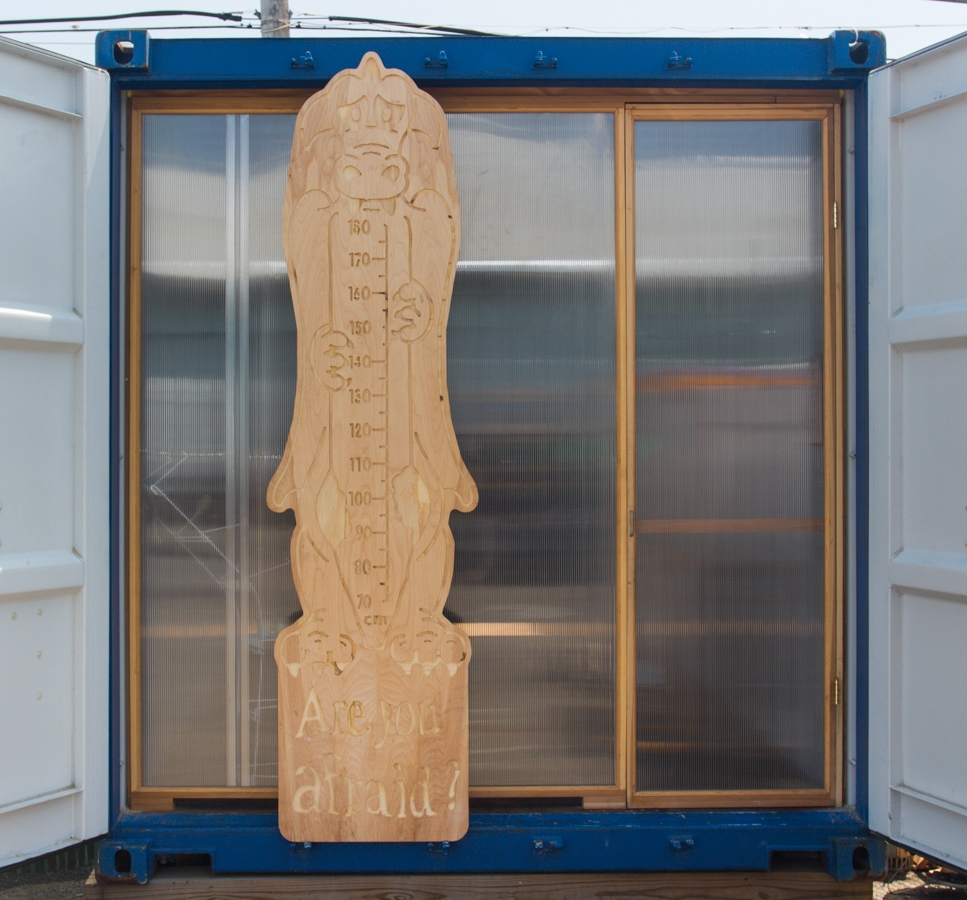
The Dragon’s Last Stand, 2015
wood
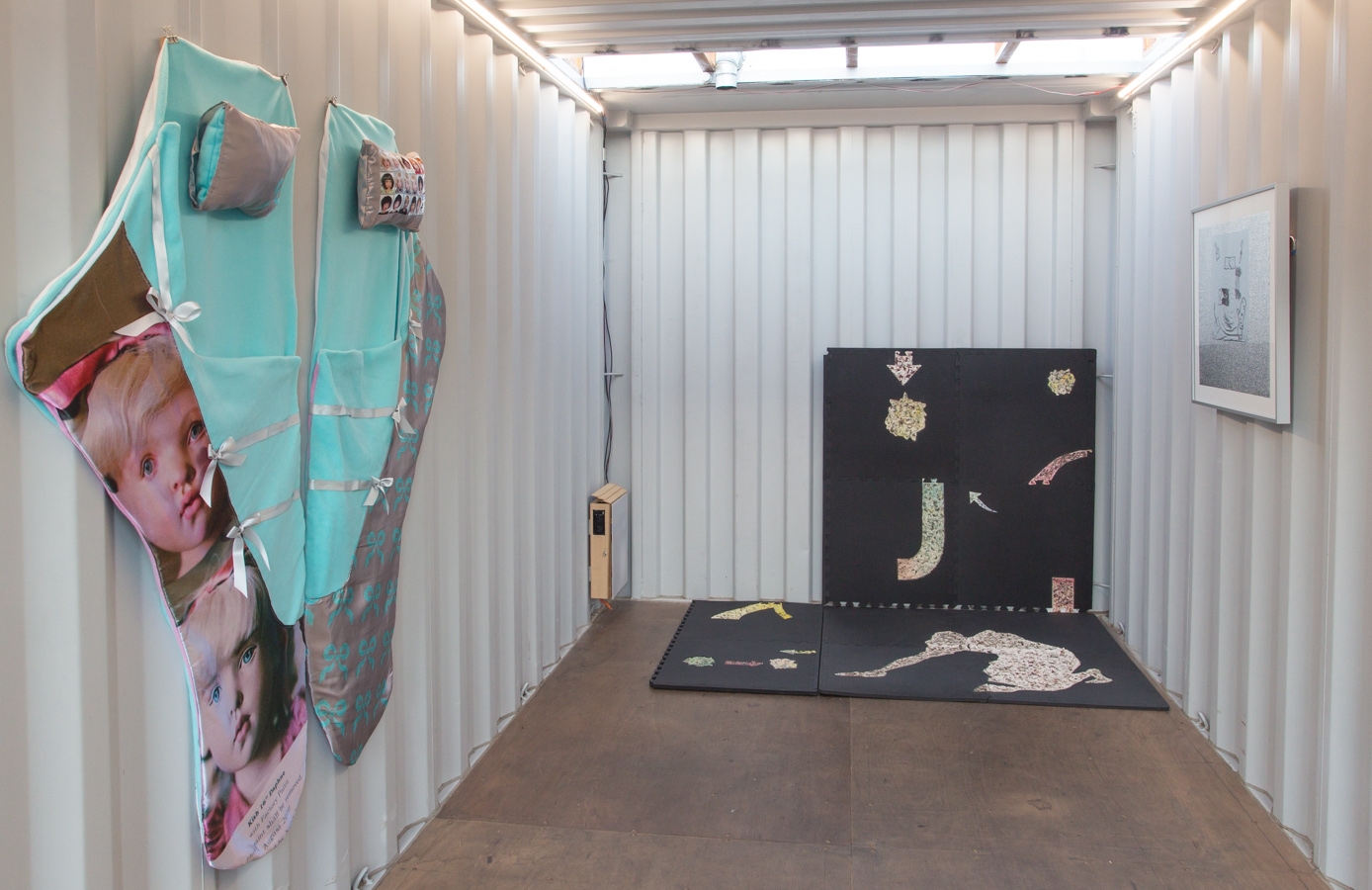
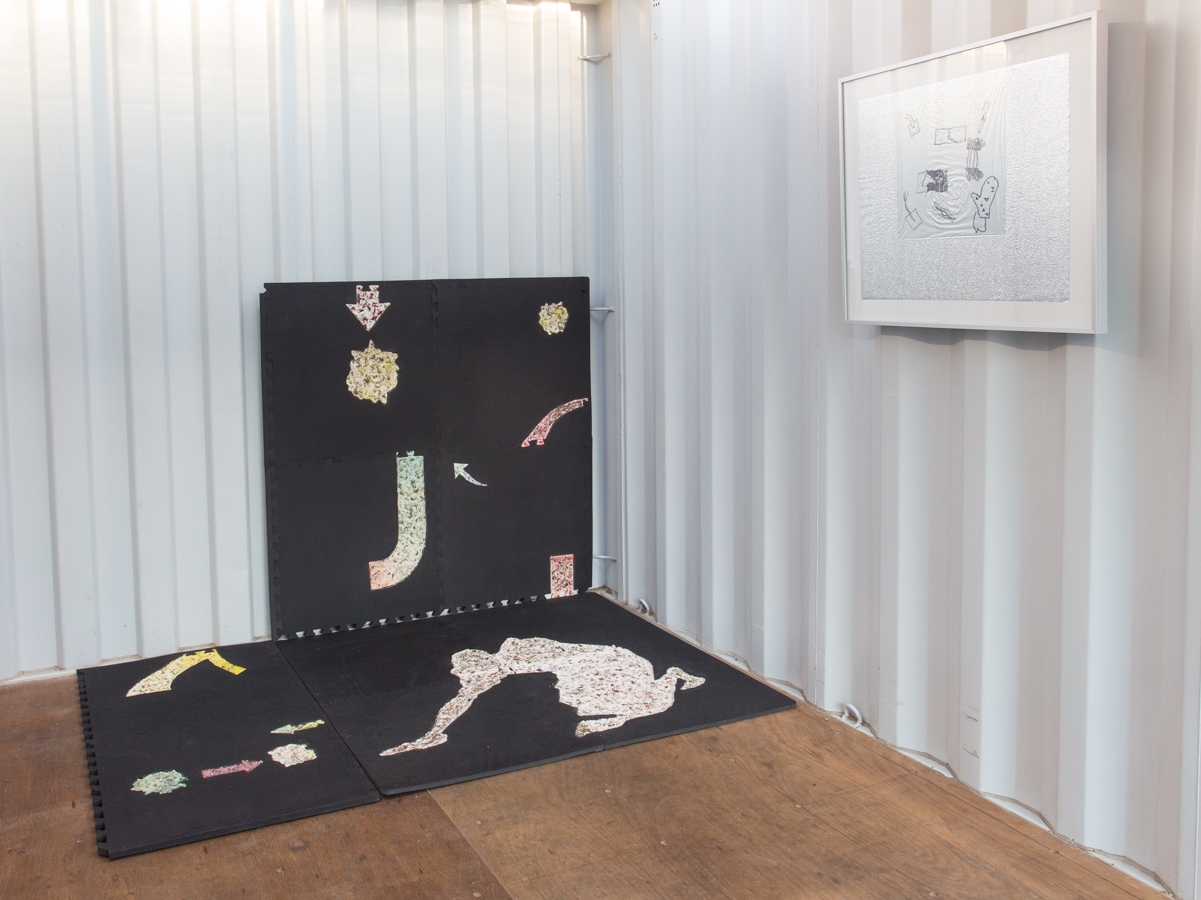
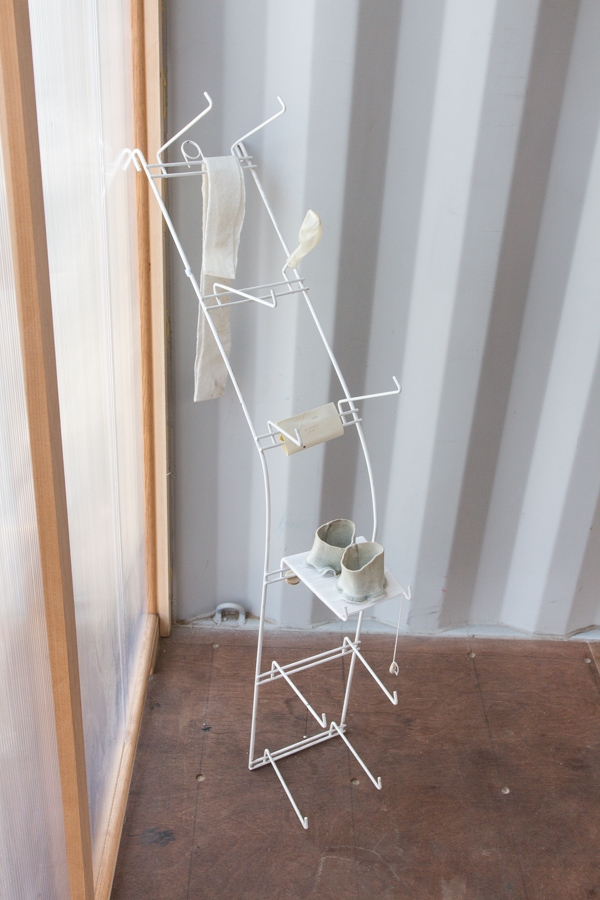
Arc, 2016
recycled iron structure, cotton sweatshirt cuffs and hem, rubber balloon, Plan B packaging, tin bell, shell, cotton string, paper
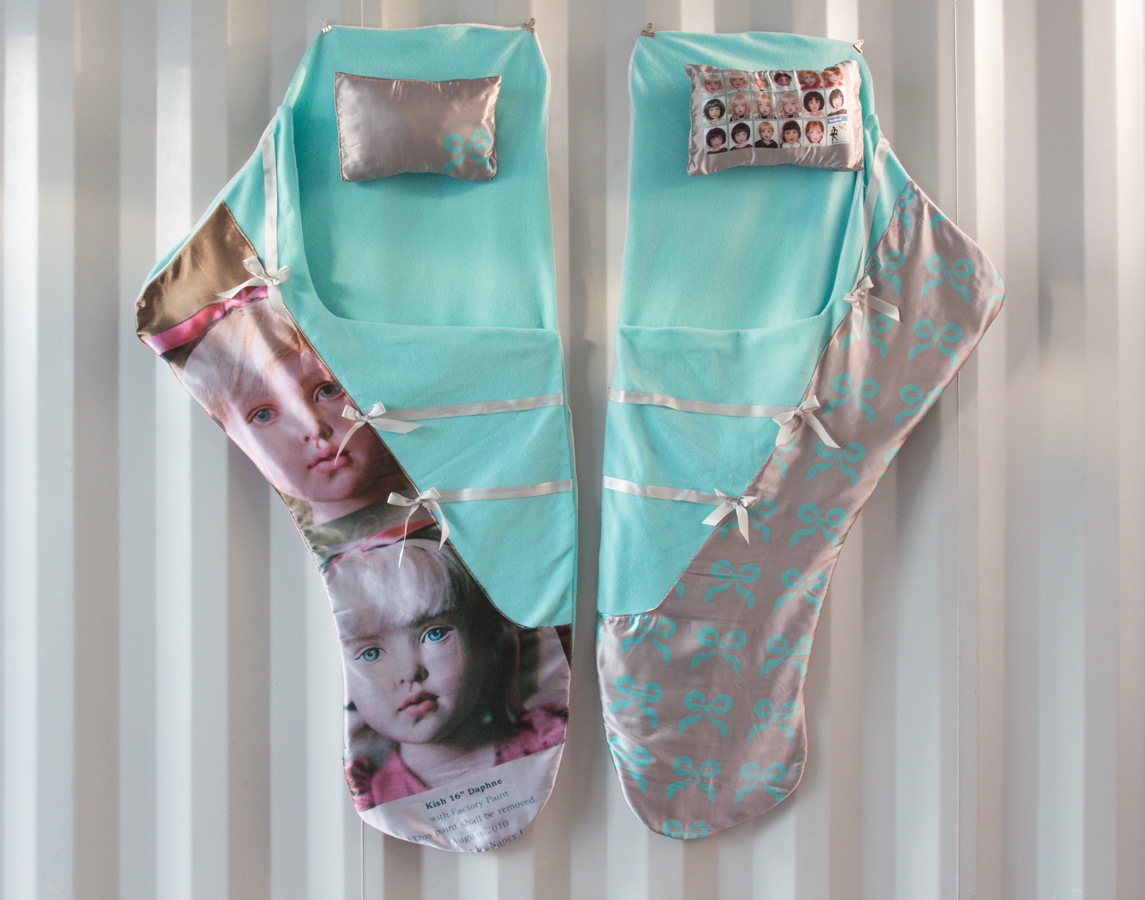
Little Matchbook Data, 2017
satin, fleece, ribbon, batting
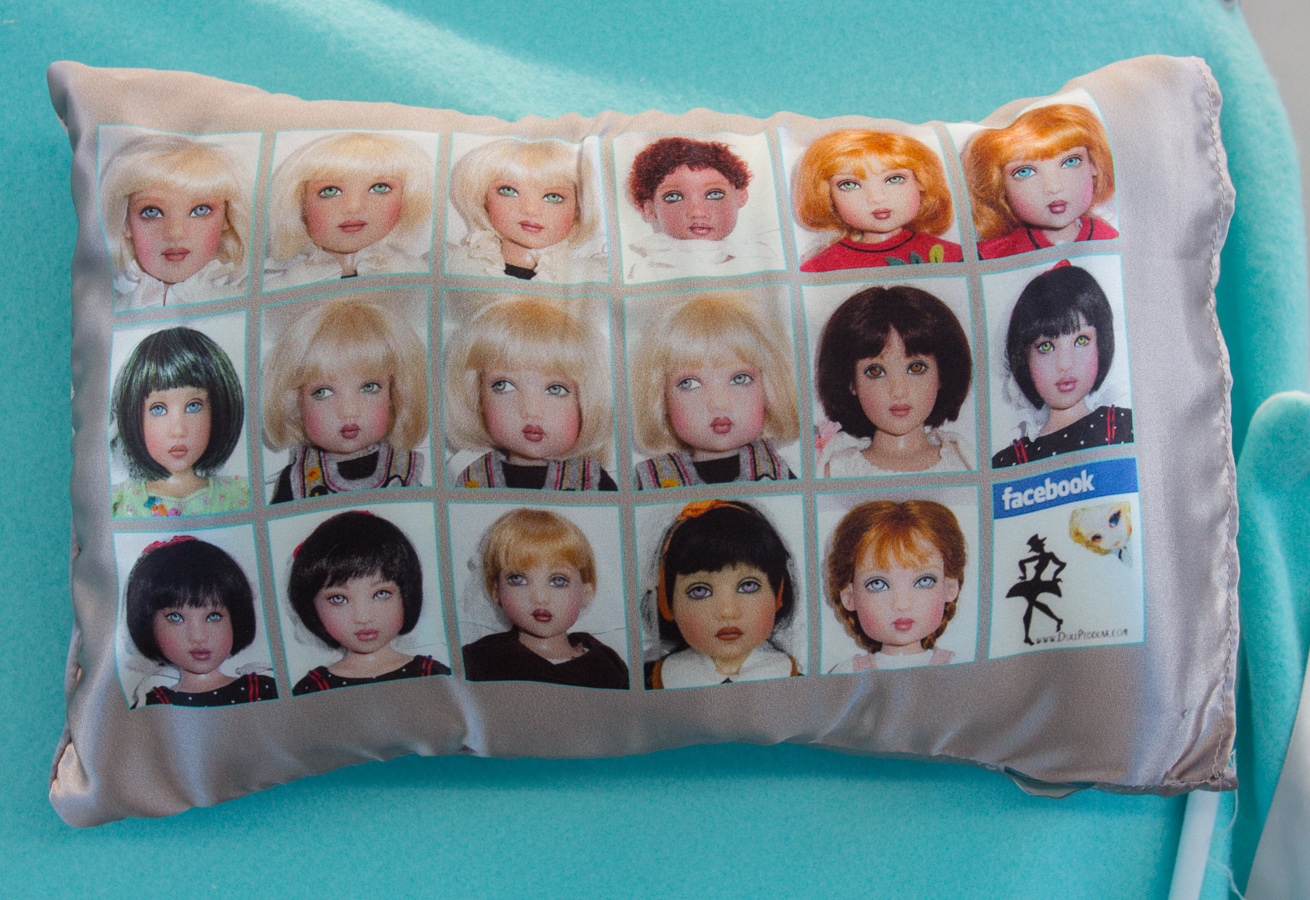
Little Matchbook Data [detail]
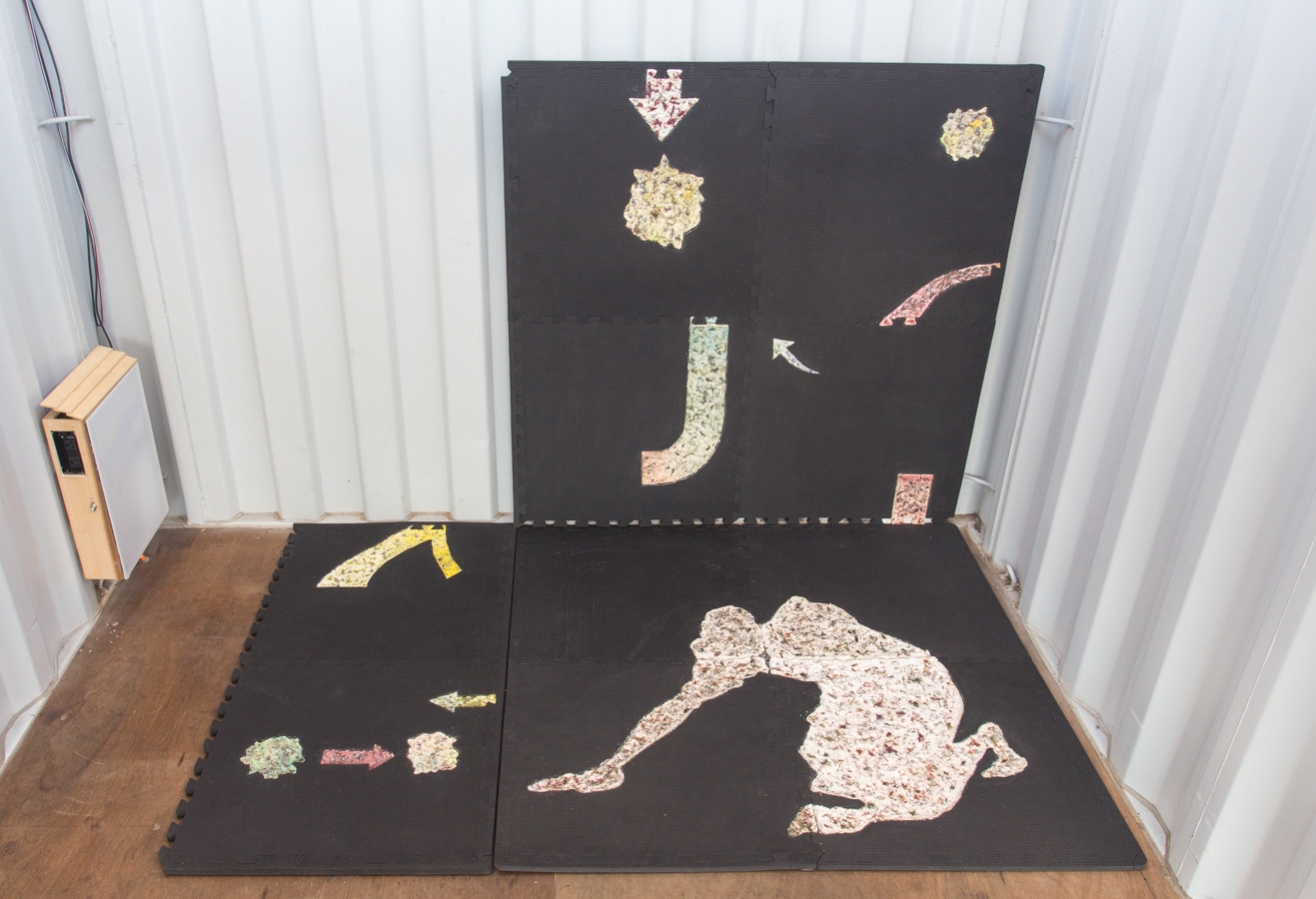
Detoxification Floor Mat with Collapsed Figure, 2017
celluclay, pigment, juniper berries, dyed calendula petals
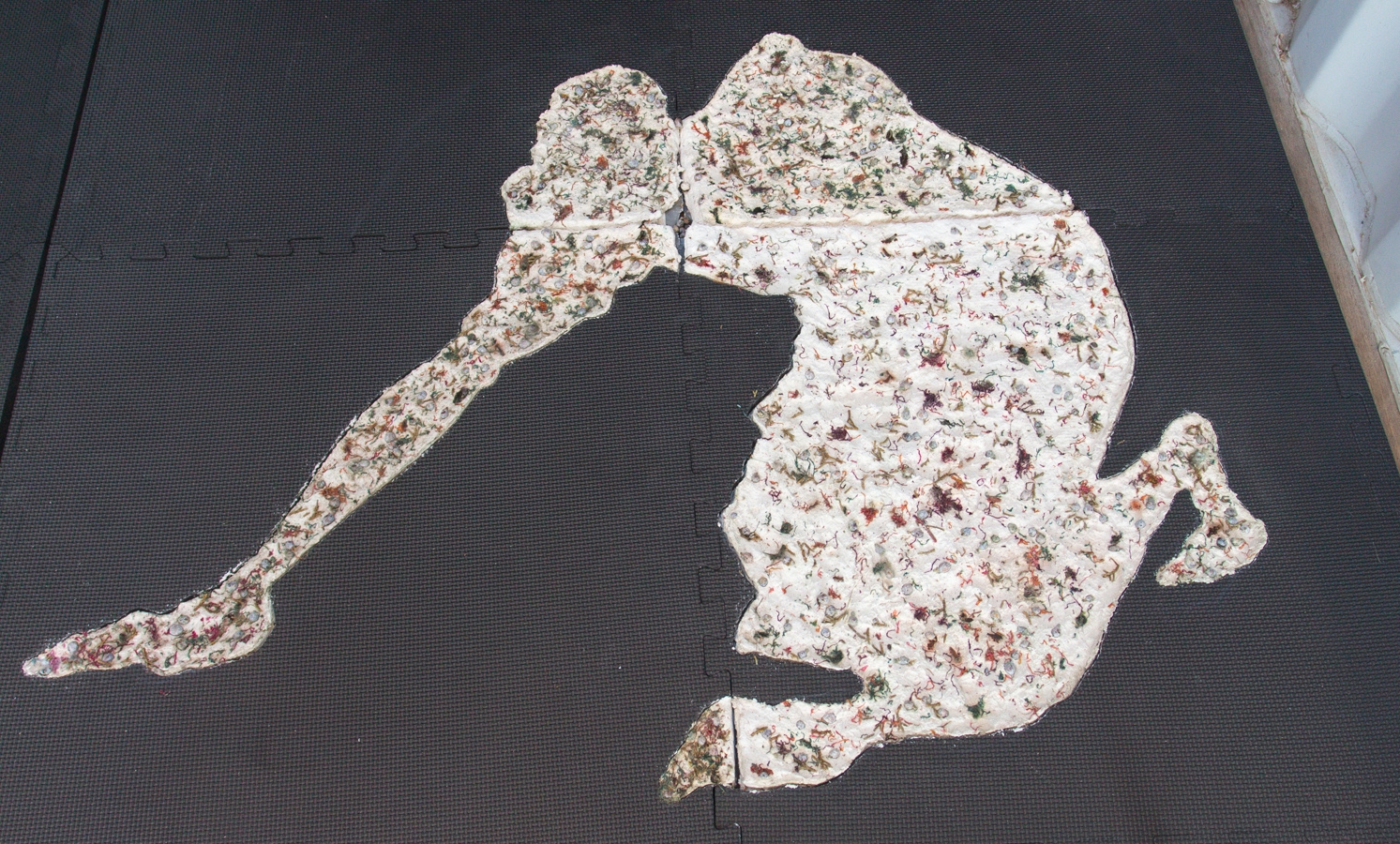
Detoxification Floor Mat with Collapsed Figure [detail]
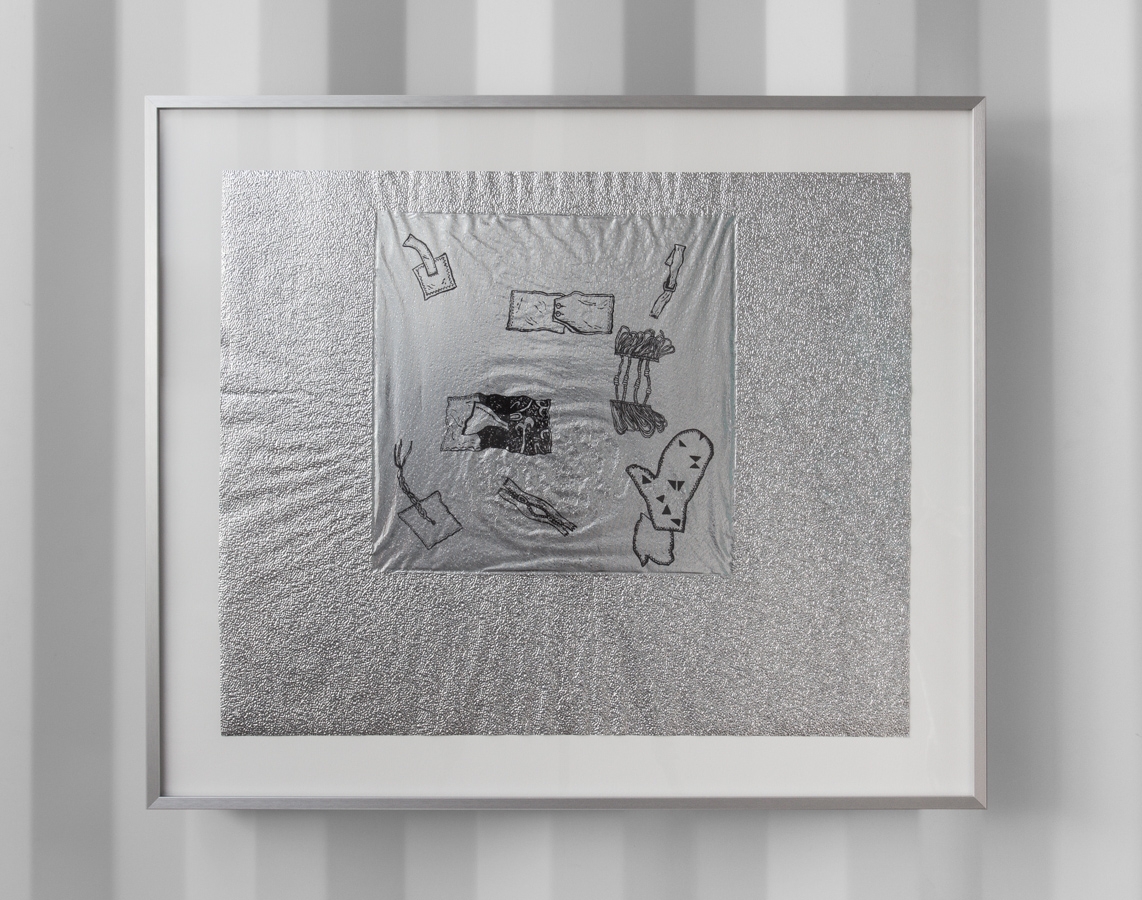
Activity Mat I, 2017
latex paint on heat-pressed reflective silver coated paper
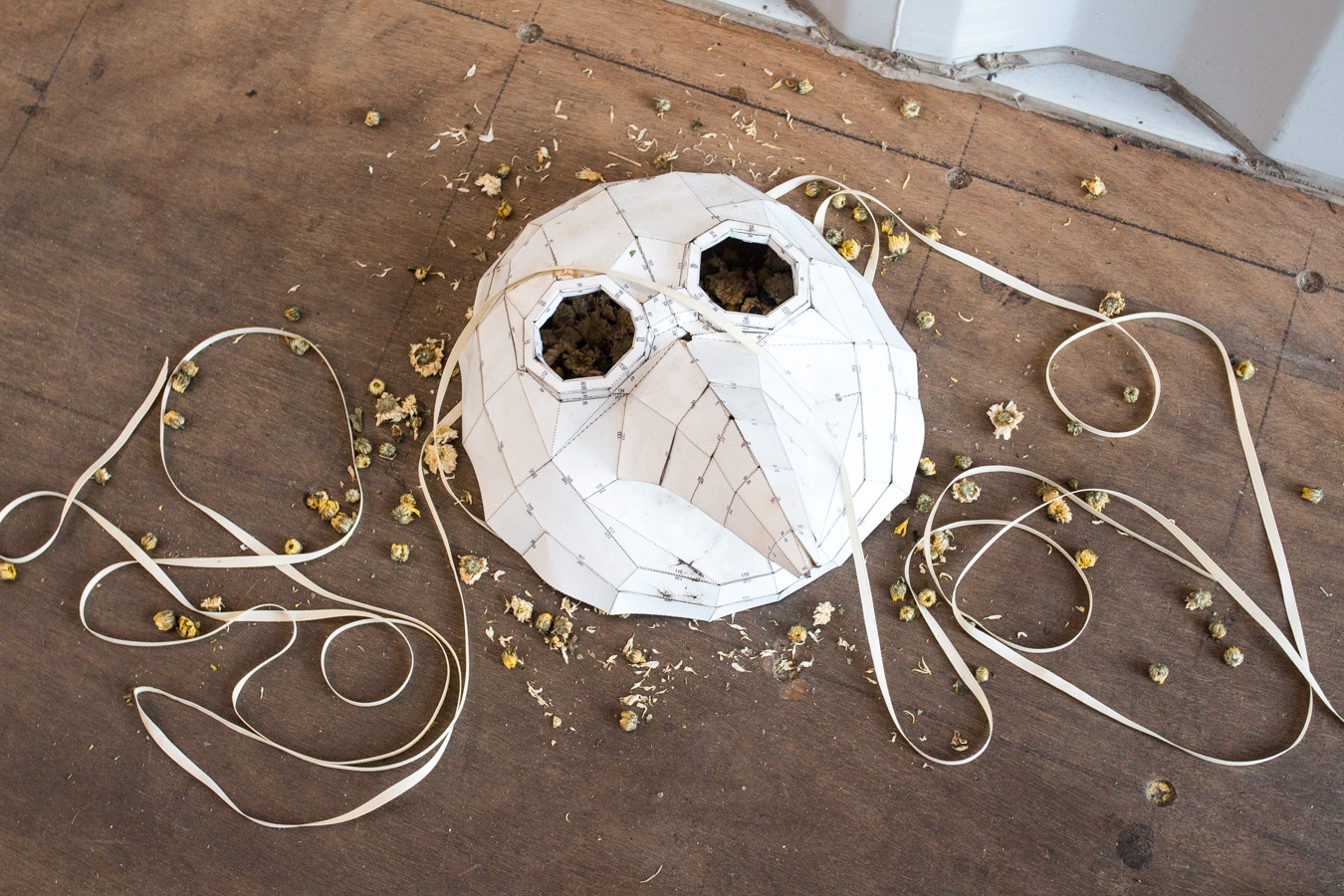
Keep Dreaming Serfs, 2016
paper, chrysanthemum, silk ribbon, donkey hide glue
Natalie Labriola
Hayley Martell
Alex Metcalf
Sydney Shen
Flannery Silva
i. Every American Girl Doll has the same body and is crafted from the exact same face mold. Difference is denoted by the color of the skin and eyes; gender by the length of the hair. The plush torsos are identical.
ii. A toy’s material and shape become a story told to its handlers.
iii. American Girl recently announced its “first-ever boy American Girl Doll.” Meet Logan Everett!
iv. A pleased customer shared a story of their son’s experience with a doll he could identify with (a doll that is gendered male):
I looked high and low for a Boy, not baby boy, doll for my little boy years ago. Finally found something from Europe. At three years old he told us, "Of course I love him. I’m learning to be a Daddy."
v. Play displaces anxiety for the body. Play is a way to learn nurturing behaviors, but is also a training ground for the (re)enactment of reified structures: I am learning to be a Daddy.
vi. Beyond theories of dolls as surrogates for a child’s past and future—beyond the timeworn article—one might insist: I am not that doll… but when I hold it in my hands, there is a continuity of experience. Complicating the boundaries of an omnipotent sense of body and external reality, the transitional object—a material fantasy—is not me, but it is not not-me either.
[…] the terms 'transitional objects' and 'transitional phenomena' designate the intermediate area of experience, between the thumb and the teddy bear, between the oral erotism and the true object-relationship, between primary creative activity and projection of what has already been introjected, between primary unawareness of indebtedness and the acknowledgement of indebtedness.*
vii. These fragments are not to say that dolls, toys and play are the exclusive contexts for this thinking. Instead, they suggest case studies for considering how inert objects inform the becoming of a subject.
viii. Some me, held in one’s hands— neither pre-existent, nor stable.
ix. Radical inquiry into subject formation encircles two models: the idea that subject formation is a continuous process of becoming, and the idea that there is a fundamental something that one is and always already possesses.
x. Displaced play-objects and environs are often unmoored from the process of becoming; But I don’t have that luxury! An object became; its becoming stops.
xi. Regardless, perhaps you and your toys often failed each other. With gritted teeth, in the face of an unnamed overwhelm, perhaps you wanted to renounce or squish them, yourself, to bits.
xii. Grow up. Cherish me. Forget me. Never let me be thrown away. Resent my smallness, dread my hollowness. I am safe.
* D.W. Winnicott, “Transitional Objects and Transitional Phenomena,” Playing and Reality.
Curated by Gabrielle Jensen and Elizaveta Shneyderman